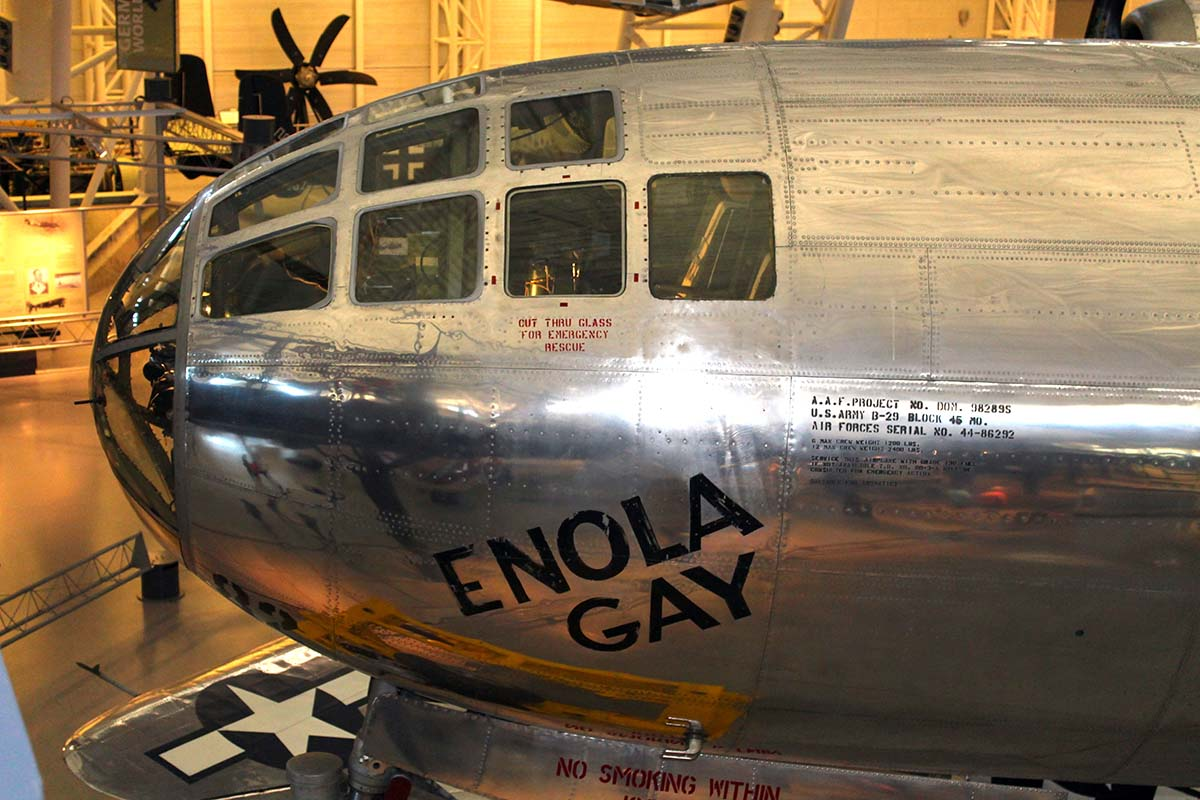
No period in American warfare history has been more highly charged with emotion and controversy than the past of the Enola Gay, the B-29 Superfortress bomber that dropped the initial atomic bomb on Hiroshima. Its importance transcends the dawn of the nuclear age to involve questions of morality, warfare strategy, and the price of victory in human life. This single plane, over the next decade, was a symbol of technological marvel and ethical outrage and fueled angry debate over how the past should be remembered.

The B-29 itself was a technological marvel. Able to cruise 400 miles an hour with a 10-ton bomb for 2,500 miles, it was the epitome of war engineering. Pressure cabins, remotely controlled defense turrets, and huge engines made it the greatest bomber of its time. The B-29 effort was the most expensive of any World War II undertaking, even outpacing the Manhattan Project. While the original models suffered from mechanical ills—popularly known as an insect museum by General Curtis LeMay—the planes eventually were a key reason for turning the tide of the Pacific War.

Enola Gay was named after the mother of Paul Tibbets, and it was among the exclusive list of B-29s modified under the “Silverplate” program to be capable of carrying bombs with atomic explosives. Modifications involved reinforced bomb bays, reinforced engines, and reduced defensive armaments to maximize speed and range. Tibbets and his crew left Tinian Island on August 6, 1945, and dropped the uranium “Little Boy” bomb on Hiroshima. A few days later, a second Nagasaki bombing occurred, and Japan subsequently surrendered unconditionally, which effectively ended World War II.

By the late 1980s, the Enola Gay rested in its tired condition, years of inactivity, a casualty to souvenir-hunting tourists. Veteran groups demanded that it be preserved and displayed, and the Smithsonian’s National Air and Space Museum proceeded to develop an exhibition on the 50th anniversary of the war. Director Martin Harwit envisioned something more than a proper display; he envisioned the potential of recounting the entire story of the airplane, the technical triumph, and the human significance of its mission.

Curators spent the better part of a year working on a painstaking 500-page proposal for an exhibit titled Crossroads: The End of World War II, the Atomic Bomb, and the Origins of the Cold War. It aimed to explore the Pacific war, the bombing choice, its immediate context, and its broader meaning for the early Cold War.

Despite careful planning, the intended exhibit immediately provoked bitter controversy. Various veterans’ organizations, such as the Air Force Association and the American Legion, objected to what they saw as an emphasis on Japanese deaths and too little attention to the strategic significance of the bomb. They argued that the exhibit needed to state outright that the atomic bombings were an attempt to bring the war to a close, save American lives lost, and have no other choice—arguments still argued by historians.

The media took the backlash further, with sensational front pages and out-of-context quotes fueling public anger. Politicians joined the fray, promising to halve Smithsonian funding and calling for root-and-branch changes.

Under intensifying pressure, the original idea of the exhibit was drastically trimmed back. Photos and objects showing the aftermath in Japan were truncated, casualty figures were challenged, and most of the critical analysis was cut. The original proposal was then rejected by Smithsonian Secretary I. Michael Heyman. When the exhibit finally opened in June of 1995, it consisted mainly of the Enola Gay’s nose section, wartime headlines, and a short documentary on its restoration.

Heyman had referred to the finished product as one that went “more to the imagination.” It was sanitized, criticized by some, but veteran groups were inclined toward being able to see it as respectful. Harwit, who had envisioned saving the whole story, resigned in disappointment.

Enola Gay controversy has left a lasting legacy on the way museums handle controversial military history. The event made institutions wary of displays that disrupt conventional narratives or offend the public. The aircraft is now displayed at the Smithsonian’s Udvar-Hazy Center with subdued context, its whole story hardly murmured.

But the Enola Gay controversy is less about the plane itself than it is about who gets to preside over memory regarding how history is remembered in terms of what, whether victory is celebrated by museums, hard facts are acknowledged, or remembering is weighed against looking back. Nothing is more consequential, and everything is fair game. That is a problem still echoing today, reminding us that how we recall memories about history is often as much at issue as history itself.
